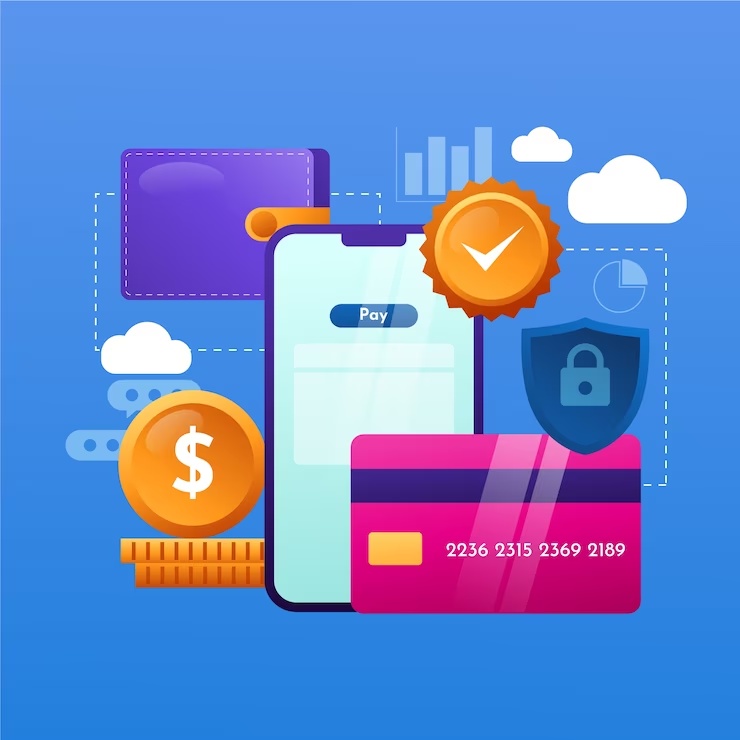In today's fast-paced digital landscape, electronic wallet (eWallet) apps have become an integral part of our lives, revolutionizing the way we handle financial transactions. These apps offer a seamless and convenient way to manage money, make payments, and conduct transactions digitally. The success of an eWallet app hinges on several key features that cater to user needs, security concerns, and technological advancements. Let's delve into the essential elements that define successful eWallet apps.
-
User-Friendly Interface: A well-designed user interface (UI) is crucial for eWallet apps. It should be intuitive, visually appealing, and easy to navigate. Users should be able to access various features with minimal effort, ensuring a smooth and engaging experience.
-
Multiple Payment Options: Successful eWallet apps support a wide range of payment options, including credit and debit cards, bank transfers, and even cryptocurrencies. This versatility ensures users can make payments using their preferred methods, enhancing convenience and user adoption.
-
Seamless Integration: Integration with various merchants and service providers allows users to make payments directly from the app. This feature eliminates the need to switch between different apps or platforms during transactions, offering a streamlined experience.
-
QR Code and NFC Technology: Quick Response (QR) codes and Near Field Communication (NFC) technology enable users to make payments by simply scanning a QR code or tapping their device on a point-of-sale terminal. These features enhance the speed and ease of transactions, making them a staple in successful eWallet apps.
-
Peer-to-Peer (P2P) Transfers: Enabling users to send and receive money to and from friends, family, or colleagues within the app promotes social engagement and makes splitting bills or sharing expenses effortless.
-
Security Measures: Security is paramount in eWallet apps. Multi-factor authentication, biometric login (fingerprint or facial recognition), and encryption techniques protect user data and transactions from unauthorized access and cyber threats.
-
Transaction History and Notifications: Offering a detailed transaction history along with real-time notifications ensures that users can keep track of their spending and stay informed about their account activities.
-
Budgeting and Expense Tracking: Incorporating budgeting tools and expense tracking features helps users manage their finances effectively, promoting better financial decisions and planning.
-
Reward Programs and Cashback: Successful eWallet apps often include loyalty programs, cashback offers, and discounts, enticing users to use the app for transactions and fostering customer loyalty.
-
Cross-Platform Compatibility: To cater to a diverse user base, eWallet apps should be compatible with various platforms, including smartphones, tablets, and desktop computers, providing a consistent experience across devices.
-
Offline Functionality: While online connectivity is the norm, allowing limited offline functionality for essential tasks ensures users can still access their eWallets during periods of limited connectivity.
-
Currency Conversion: For international users, seamless currency conversion functionality simplifies transactions across different currencies, eliminating the need for third-party conversion tools.
-
Customer Support: Efficient customer support channels, such as in-app chat or email, address user concerns promptly, enhancing user satisfaction and trust in the app.
-
Regulatory Compliance: Adhering to local and international regulations for financial services is crucial for building trust and maintaining the app's legality and security.
-
Regular Updates and Improvements: Successful eWallet apps continuously evolve to incorporate user feedback, adapt to changing technologies, and stay ahead of security threats. Regular updates ensure that the app remains relevant and competitive.
-
Collaborations and Partnerships: Collaborating with banks, financial institutions, and merchants can expand the app's functionality and offer additional benefits to users.
Conclusion:
The development of a successful eWallet app requires a meticulous approach that combines user-centric design, versatile payment options, robust security measures, and a wide array of features to deliver a convenient, efficient, and secure platform for digital financial transactions. By prioritizing these key features and staying responsive to user needs, eWallet apps can thrive in an increasingly digital financial landscape.
However, it's important to note that the journey to success begins with the development phase, where meticulous planning, skilled coding, rigorous testing, and seamless integration come into play. Engaging in eWallet app development demands a deep understanding of user behavior, technological trends, security protocols, and regulatory compliance. Only through a strategic blend of these elements can an eWallet app emerge as a reliable, trusted, and favored choice among users, ultimately redefining the way we manage our finances in the modern world.


No comments yet